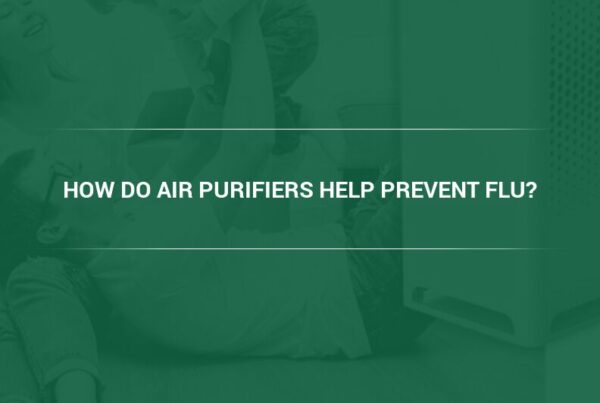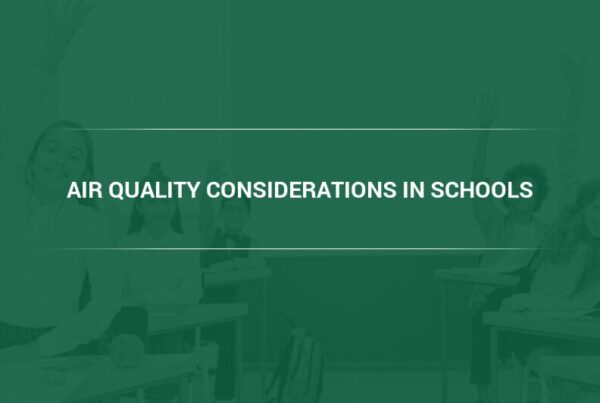The annual Allergy Capitals Report has recently named Dallas, Texas as the second worst city in the country for allergy sufferers. The report looked at a variety of factors, including pollen count, over-the-counter medication usage, and the accessibility of allergists and immunologists to determine which areas are most affected by allergy season each year. In Dallas, high levels of pollen and other allergens make it especially difficult for those with allergies or asthma to enjoy the beautiful weather that the city offers year-round.
In this article, air quality experts from Camfil discuss the findings of the Allergy Capitals Report, explain the causes of Dallas’s severe allergy season, and explore solutions and remedies for seasonal allergies in the region.
What Are the Symptoms of Seasonal Allergies?
Seasonal allergies, which are also commonly called hay fever, or by their official medical diagnosis “seasonal allergic rhinitis,” are caused by a reaction to airborne allergens, such as pollen and mold. Because plants only release pollen at specific times of the year (though the exact window varies by region and type of plant), seasonal allergies occur during specific seasons.
Symptoms of seasonal allergies can include:
- Sneezing
- Stuffy nose
- Runny nose
- Red, itchy, or watery eyes
- Itchy ears, nose, and mouth
- Throat pain and irritation
- Fatigue or excessive tiredness
For some people with seasonal allergies, the symptoms only cause mild inconvenience and discomfort, but for others, the symptoms can be severe and cause major life disruptions, causing allergy sufferers to have to use sick leave and preventing them from attending important events as they try to avoid pollen exposure and manage their symptoms.
What is Allergy Capitals Report and Why is Dallas Ranked so Highly?
Dallas has recently been named among the worst cities in the country for allergy sufferers due to its high levels of pollen and other allergens. Each year, the Asthma and Allergy Foundation of America releases its annual “Allergy Capitals” report, which ranks the 100 most populous cities in the United States by their levels of pollen and other allergens.
The primary cause of seasonal allergies is an overactive immune system that reacts to airborne particles, such as pollen, mold spores, and dust mites. These particles can trigger an allergic reaction, causing symptoms like sneezing, a runny nose, itchy eyes, and coughing, and occasionally more severe symptoms such as a swollen throat or hives on the body.
The Allergy Capitals report measures the levels of pollen and other allergens in each city as well as the availability of allergy treatments and services. Dallas has been ranked the second worst city for allergy sufferers (behind Wichita, Kansas) due to the city’s high levels of year-round allergens, high over-the-counter allergy medication usage, and moderate availability of allergists per capita.
When is Allergy Season in Dallas?
The climate in North Texas is hospitable to a diverse variety of trees, flowers, grasses, and weeds, making for a rich natural ecosystem. However, this also means that there are high pollen counts for a large portion of the year.
According to pollen count data from Kleenex, the most difficult times of year for allergy suffers in the Dallas-Forth Worth metropolitan area are February through April, when many species of trees pollinate, and September through October, when weeds and other plants pollinate.
Pollen levels are moderate but still noticeable to those who experience allergies to specific pollutants during the rest of the year:
- Grass pollen season spans from March to September
- Tree pollen season is most severe from February until April, but extends through June
- Ragweed pollen season is August through November, with notably high pollen counts compared to most other regions
- Mountain cedar pollen occurs from December through February
- Mold spores are released at moderate levels year-round, but peak in July
What Seasonal Allergens Are Common in Dallas?
The DFW area has notably high counts of ragweed pollen in addition to an extended ragweed season compared to other areas of the United States. Other common allergens contributing to the high pollen count include:
- Bermuda grass
- Timothy grass
- Sweet vernal grass
- Ragweed
- Cedar tree
- Hickory
- Poplar tree
- Oak
- Elm
- Ash
- Pecan tree
- Cottonwood tree
What Factors Make Allergy Season Worse in Dallas?
Although Dallas tends to have good outdoor air quality year-round, according to the Air Quality Index, there are several factors that can make allergy season worse in some areas. These include:
- Concentrated pollutants from local industry and power plants.
- The windy climate and flat landscape, which facilitates the faster spread of allergens.
- Humidity and temperature fluctuations that affect air quality and trigger the release of larger amounts of pollen from some plants.
- Pollen counts increase with sunny weather.
- Pollen counts increase with rain.
Top 8 Tips for Minimizing Allergy Symptoms in Dallas, TX
Children’s Health of Dallas, a network of pediatric specialists across North Texas, names eight essential strategies for managing allergy symptoms in Dallas and surrounding areas.
- Stay inside in dry, windy weather conditions.
- Plan yard work around pollen spikes.
- Change and wash your clothes after extended periods of time outdoors.
- Bathe or shower after coming in from outdoors.
- Keep doors and windows closed.
- Vacuum often.
- Use a nasal rise to move allergens out of your nasal passages.
- Protect your home with HEPA filters.
How the Right Air Filters Can Help Alleviate Allergy Symptoms
Many allergy sufferers end up spending a large amount of time indoors in an attempt to avoid the pollen present outside. While this is a recommended course of action by allergists and immunologists for those with severe allergies, you may not be as protected indoors as you think.
Pollen is considered an indoor air pollutant, and pollutants can be as much as fifty times more concentrated in indoor spaces. This is especially true of indoor spaces with poor ventilation, which causes pollutants to build up in specific areas, and spaces that recirculate polluted air without adequate filtration to remove harmful pollutants. It is important to note that the panel filters that come with most HVAC systems are only effective enough to protect the equipment from being damaged by large dust and debris particles, but are not efficient enough to protect human lungs from smaller particles.
Premium air purifiers with factory-tested HEPA filters are the most effective air filtration solution for seasonal allergies. Air purifiers are also more accessible to most people, because they operate independently of the building’s HVAC system, meaning that no particular HVAC specifications are required, and they plug into standard electrical outlets, meaning that installation is easy and does not require professional assistance.
Air purifiers can be used in homes, offices, classrooms, gyms, and commercial and public buildings to remove pollen from the air and provide allergy sufferers with breathable air.
Using a high-quality air purifier that utilizes tested and certified HEPA filters, like Camfil’s City M, can immensely help to mitigate indoor pollen concentrations that often cause allergy symptoms. Besides the HEPA filters, this air purifier incorporates an activated carbon filter that has the added ability to capture and diminish irritants such as household odors, fumes, and VOCs, which can cause respiratory irritation.
The installation of an efficient air purifier like the City M, along with medication and immunotherapy, can help you effectively manage your allergies this season and relish a more comfortable spring.
About Camfil Clean Air Solutions
For more than half a century, Camfil has been helping people breathe cleaner air. As a leading manufacturer of premium clean air solutions, we provide commercial and industrial systems for air filtration and air pollution control that improve worker and equipment productivity, minimize energy use, and benefit human health and the environment. We firmly believe that the best solutions for our customers are the best solutions for our planet, too. That’s why every step of the way – from design to delivery and across the product life cycle – we consider the impact of what we do on people and on the world around us. Through a fresh approach to problem-solving, innovative design, precise process control, and a strong customer focus, we aim to conserve more, use less and find better ways – so we can all breathe easier.
The Camfil Group is headquartered in Stockholm, Sweden, and has 31 manufacturing sites, six R&D centers, local sales offices in 35+ countries, and about 5,200 employees and growing. We proudly serve and support customers in a wide variety of industries and in communities across the world. To discover how Camfil USA can help you to protect people, processes and the environment, visit us at www.camfil.us/
##
Media Contact:
Lynne Laake
Camfil USA Air Filters
T: 888.599.6620
E: Lynne.Laake@camfil.com
F: Friend Camfil USA on Facebook
T: Follow Camfil USA on Twitter
Y: Watch Camfil Videos on YouTube
L: Follow our LinkedIn Page
Sources:
https://www.kleenex.com/en-us/pollen-count/dallas-fort-worth
https://www.childrens.com/health-wellness/fight-seasonal-allergies



